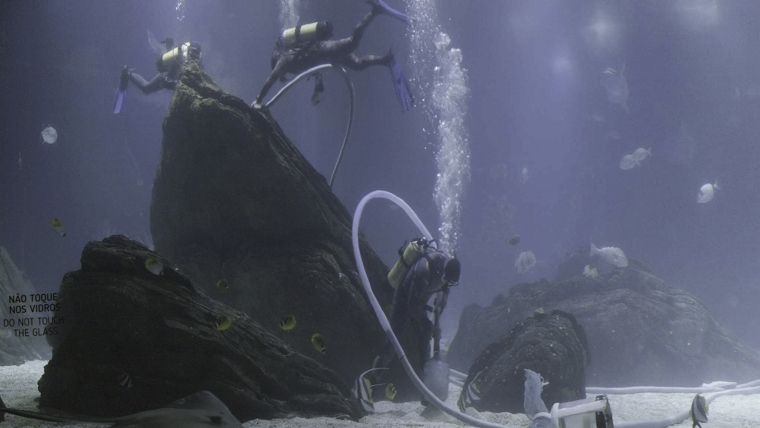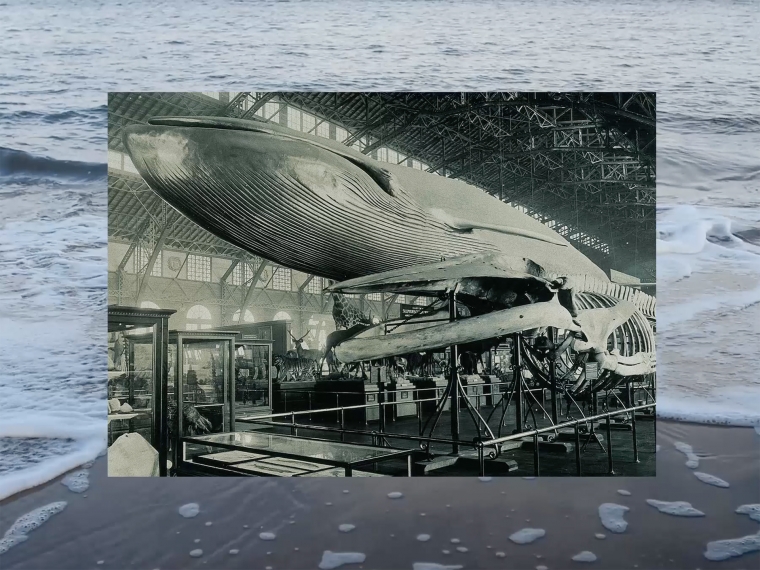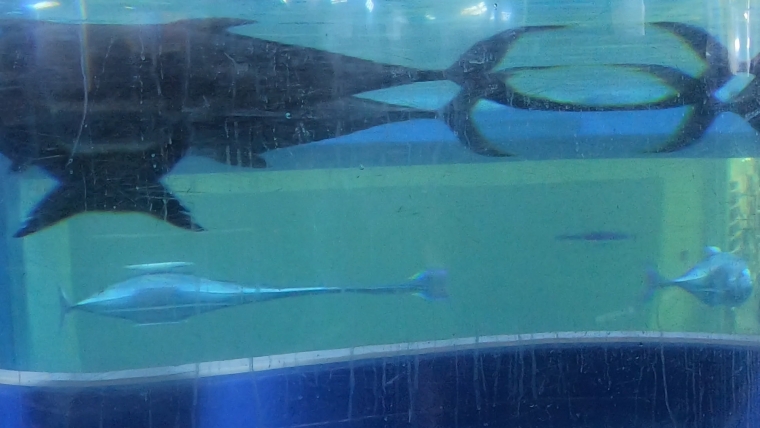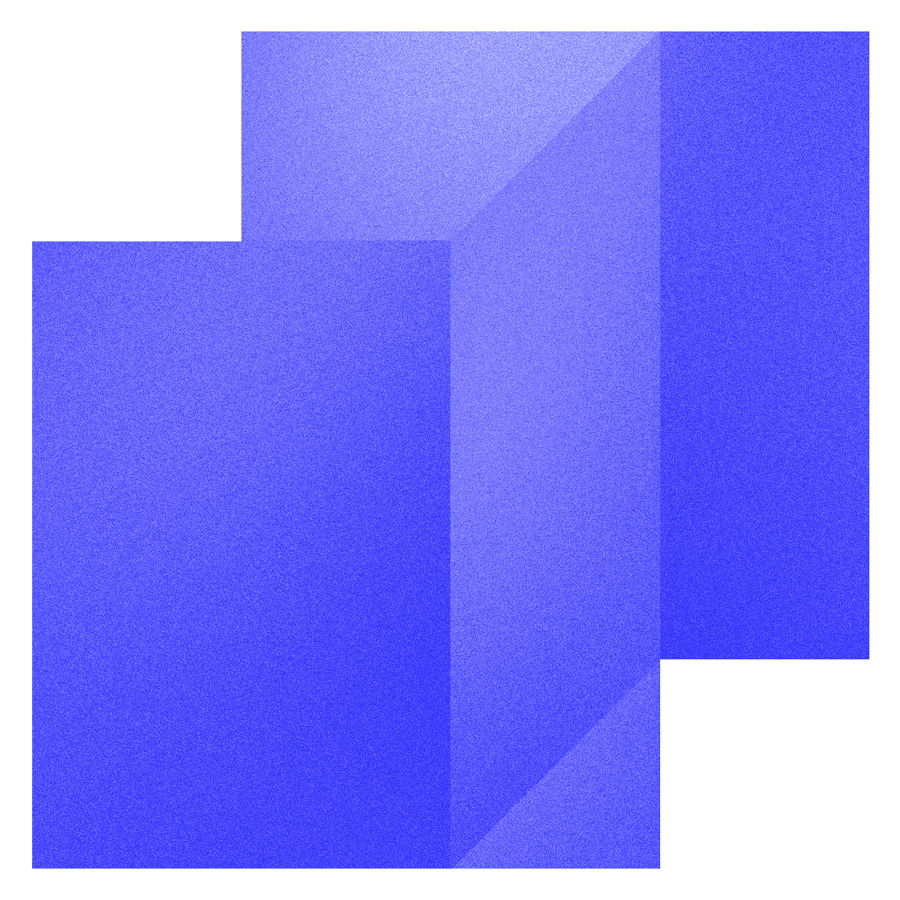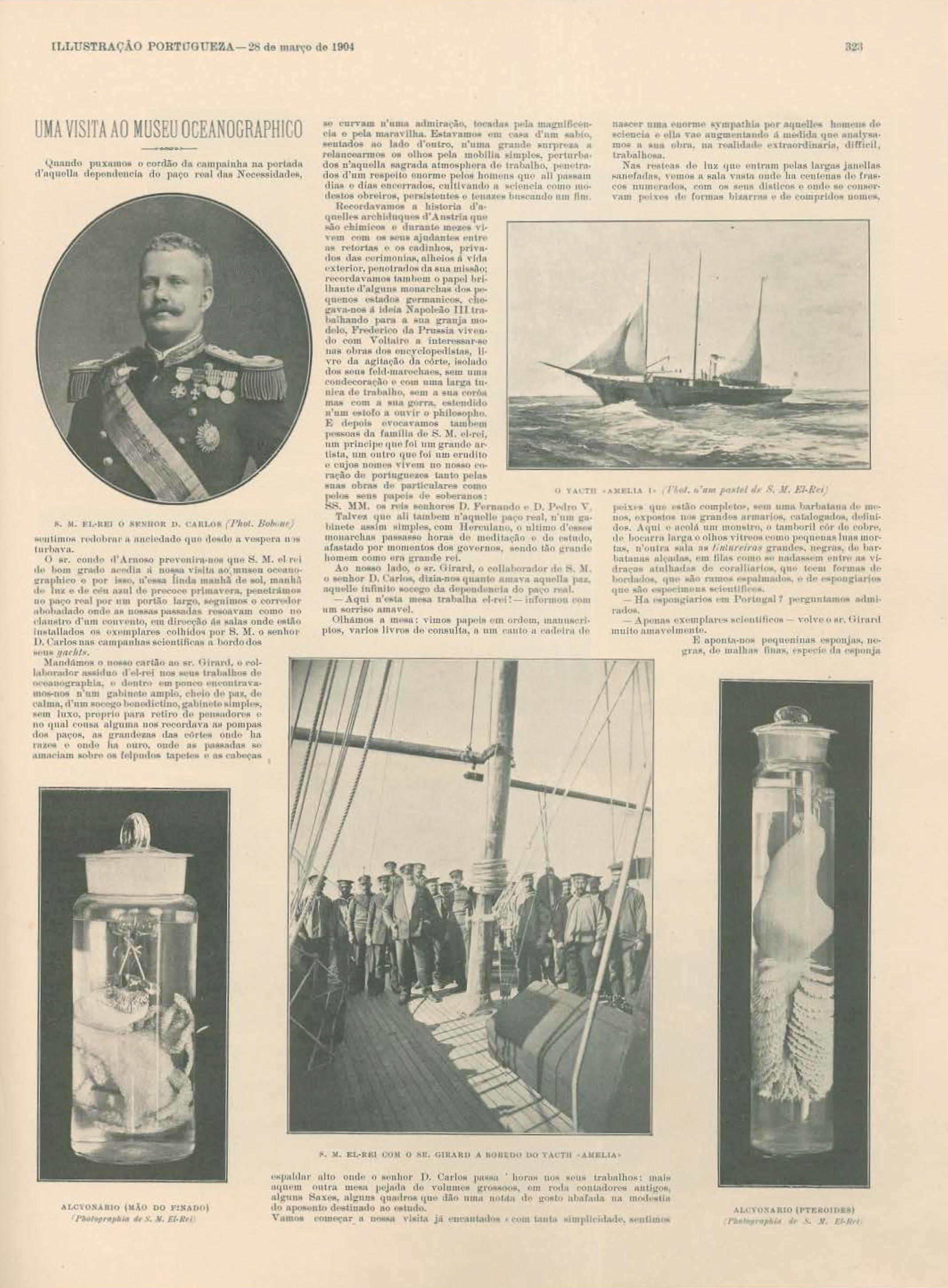
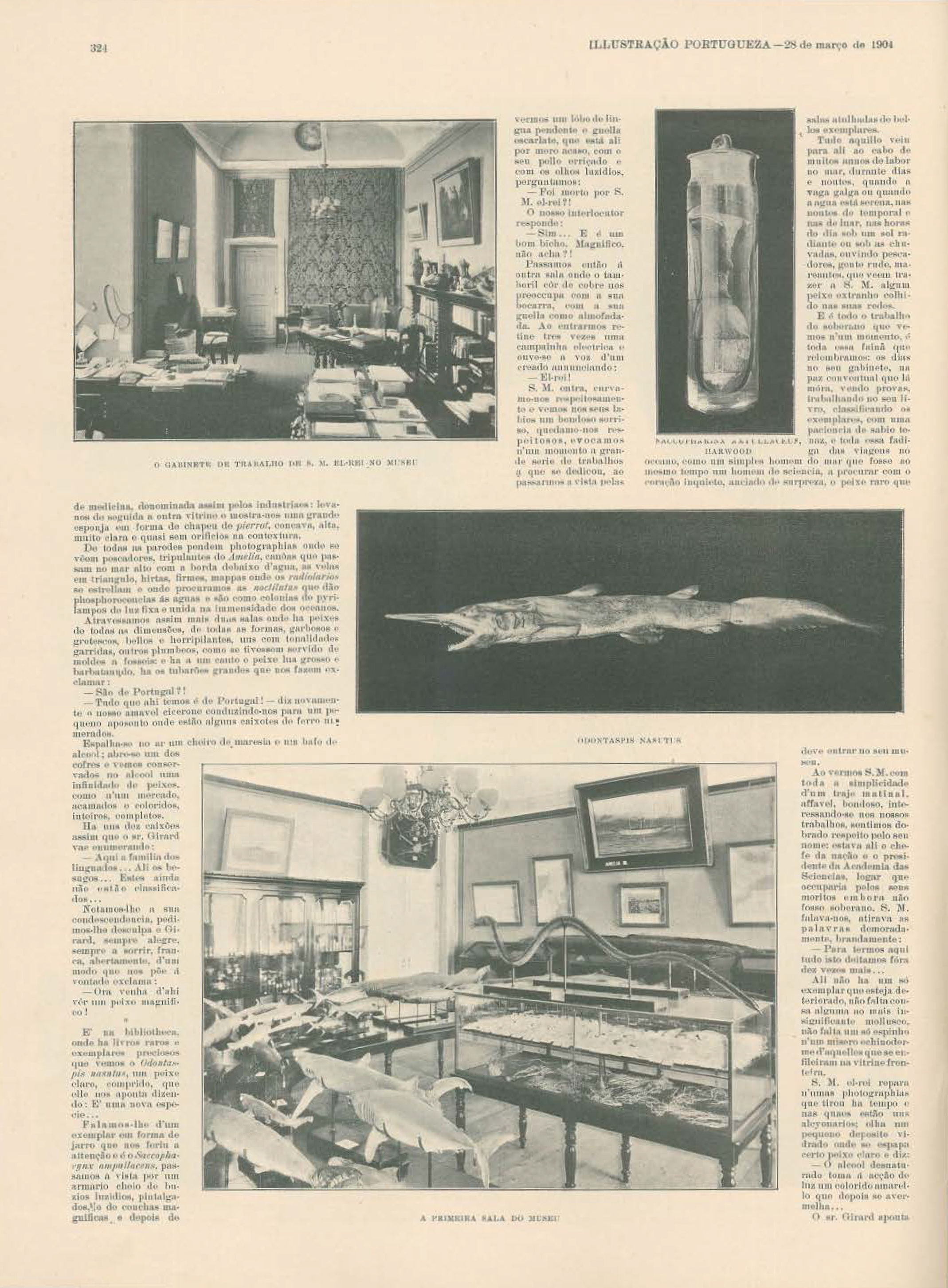

“Ilustração Portugueza”, Ano 1, n.º 21 (28 Março 1904), Lisboa: Empreza do Jornal O Século, 323-325. Courtesy of Hemeroteca de Lisboa.
Beyond the Glass Wall
Angela Rui
The Latin root of the word specimen is linked to the verb specere: to see. The shape of the water tank recalls that of the cabinet of curiosities: whether they contain animals or plants – objects of observation at any rate – they are offered for viewing through the mediation of glass walls, marking a material manifestation of our separateness from what lies beyond. The place of taxidermy in natural history and museums in the nineteenth century contributed to patriarchal and colonial missions that sought not only to take control of animals from exotic or faraway places, but also to create visual narratives of that possession that could be displayed for posterity.
How should we view the tensions between exploration, appropriation and display as part of institutional processes?
The crystallisation of form, that epistemic need to immobilise the object of knowledge, has enabled the visibility of beings whose normally elusive nature would defy observation and classification.
The plural practice of accumulating, studying and exhibiting marine samples, coupled with the fascination for the as yet unknown marine macro-universe, is at the core of the Aquário Vasco da Gama where the marine collections of King Carlos I constituted the founding material of the aquarium. They represent an objective indicator of the state of the art in marine biology in western industrialised countries, one that relied on such notions as the mission as well as the capture, analysis, classification and display of findings.
|
Angela Rui is a curator and researcher based in Milan who works in design theory and criticism. She believes that design is positioned as a critical practice that problematises conventional ways of inhabiting and experiencing the world, and that designers could operate in domains that demand their capacity to translate, raise awareness and visualise challenges and inequalities as well as currently unrecognised collective commons. Among other projects, she co-curated I See That I See What You don’t See the Dutch Pavilion for Broken Nature – XXII Triennale di Milano (2019), and Faraway So Close – the 25th Design Biennial of Ljubljana (2017). She is currently teaching the “Pedagogies of the Sea” course on the Geo-Design Master programme at the Design Academy Eindhoven.
|
“maat Explorations” is an ongoing programme that delves into the socio-cultural and environmental transformations concerning the current bio crisis and ecological destruction, providing insight into the hard science of climate intervention and the creative speculations behind innovation-led research to safeguard our planetary co-existence.
The exhibition Aquaria – Or the Illusion of a Boxed Sea reflects on the possibilities and new questions that arise when rethinking our relationship with the marine world. Curated by Angela Rui, the exhibition path unfolds through 11 installations offering different points of view to emphasise how the ways of understanding the marine environment were once designed and how they should be reconsidered today.
|



